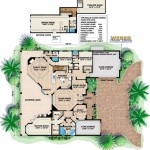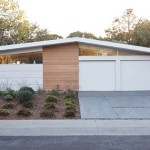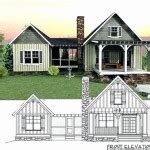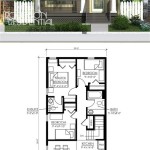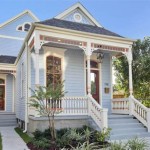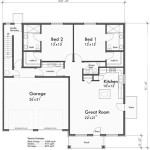House plans with carports are architectural designs for residential structures that incorporate a covered parking area attached to the main house. Unlike garages, carports are open-sided and provide protection for vehicles from rain, snow, and sun damage. They are a popular choice among homeowners who seek convenience, affordability, and increased driveway space.
Carports are typically designed with a sloped roof and are supported by pillars or beams. They can be either attached to the side of the house or designed as freestanding structures. Attached carports offer the advantage of direct access to the home, while freestanding carports provide more flexibility in terms of placement. They can also be customized to suit various architectural styles, from traditional to modern, making them a versatile addition to any home design.
In this article, we will explore the different types of house plans with carports, their advantages and disadvantages, and provide tips for designing and building a carport that meets your specific needs.
Here are 9 important things to know about house plans with carports:
- Attached vs. freestanding
- Size and dimensions
- Roof style and materials
- Support pillars or beams
- Building codes and permits
- Cost and budget
- Architectural style
- Convenience and accessibility
- Increased driveway space
Consider these factors when designing and building a carport to ensure it meets your specific needs and preferences.
Attached vs. freestanding
The first decision to make when planning a carport is whether to attach it to the house or build it as a freestanding structure. Each option has its own advantages and disadvantages.
- Attached carports
Attached carports are connected to the main house, typically via a shared wall. This design offers several benefits:
- Convenience: Direct access to the home without having to go outside, especially useful during inclement weather.
- Protection: The shared wall provides additional protection from the elements for both the house and the vehicles.
- Reduced cost: Sharing a wall with the house can save on construction costs compared to a freestanding carport.
- Freestanding carports
Freestanding carports are not attached to the house and stand alone as independent structures. This design also has its own advantages:
- Flexibility: Freestanding carports can be placed anywhere on the property, offering more flexibility in terms of design and placement.
- Customization: Freestanding carports can be customized to suit any architectural style, from traditional to modern.
- Increased driveway space: Freestanding carports can free up driveway space, which can be useful for parking additional vehicles or for other purposes.
Ultimately, the best choice between an attached and freestanding carport depends on your individual needs and preferences. Consider factors such as convenience, protection, cost, flexibility, and aesthetics when making your decision.
Size and dimensions
The size and dimensions of a carport are important considerations that impact both functionality and aesthetics. Here are four key points to keep in mind:
- Number of vehicles: The first step is to determine the number of vehicles that the carport will need to accommodate. A single-car carport typically measures around 12 feet wide by 20 feet long, while a double-car carport is usually around 20 feet wide by 20 feet long. If you have additional vehicles or plan to store other items in the carport, such as bicycles or lawn equipment, you may need to adjust the dimensions accordingly.
- Vehicle size: Consider the size of your vehicles when determining the dimensions of the carport. If you have a large SUV or truck, you will need a wider and taller carport to accommodate it comfortably. Measure the height and width of your vehicles to ensure that they will fit properly.
- Roof overhang: The roof overhang is the portion of the roof that extends beyond the supporting pillars or beams. A larger roof overhang provides more protection from the elements for your vehicles and can also help to keep the carport cooler in the summer. However, a larger overhang will also require more materials and may increase the cost of construction.
- Local building codes: Be sure to check with your local building department to determine if there are any specific size or dimension requirements for carports in your area. Some municipalities may have restrictions on the maximum height or width of carports, or may require a certain amount of setback from property lines.
By carefully considering the size and dimensions of your carport, you can ensure that it meets your specific needs and fits harmoniously with your home and property.
Roof style and materials
The roof style and materials of a carport play a significant role in its functionality, durability, and overall appearance. Here are four key considerations:
- Flat roofs: Flat roofs are the most common and affordable option for carports. They are typically made of asphalt shingles or metal roofing panels. Flat roofs are easy to install and maintain, but they may not be as durable as sloped roofs in areas with heavy rainfall or snowfall.
- Sloped roofs: Sloped roofs are more expensive to build than flat roofs, but they offer better drainage and are more durable in areas with inclement weather. Sloped roofs can be covered with a variety of materials, including asphalt shingles, metal roofing panels, or tiles.
- Gable roofs: Gable roofs are a popular choice for carports because they provide good drainage and ventilation. They are also relatively easy to build and can be customized to match the architectural style of the house. Gable roofs are typically covered with asphalt shingles or metal roofing panels.
- Hip roofs: Hip roofs are more complex and expensive to build than gable roofs, but they offer the best protection from the elements. Hip roofs are sloped on all four sides and are typically covered with asphalt shingles or metal roofing panels.
When choosing a roof style and materials for your carport, consider factors such as durability, cost, ease of maintenance, and architectural style. By carefully considering these factors, you can select a roof that meets your specific needs and complements the overall design of your home.
Support pillars or beams
Support pillars or beams are essential structural components of carports, providing the necessary strength and stability to withstand various loads and weather conditions. Here are four key points to consider:
- Material: Support pillars and beams can be constructed from a variety of materials, including wood, steel, and concrete. Wood is a cost-effective and versatile option, but it requires regular maintenance to prevent rot and decay. Steel is strong and durable, but it can be more expensive than wood. Concrete is the most durable option, but it is also the most expensive and requires specialized equipment for installation.
- Size and shape: The size and shape of the support pillars or beams will depend on the size and design of the carport. Larger carports will require larger and stronger support structures. The shape of the pillars or beams can also vary, with round, square, and rectangular shapes being the most common.
- Spacing: The spacing of the support pillars or beams is important to ensure that the carport is strong enough to support the roof and the weight of the vehicles parked underneath. The spacing will vary depending on the material used and the size of the carport.
- Footings: The support pillars or beams must be properly anchored into the ground using footings. Footings are typically made of concrete and help to distribute the weight of the carport evenly, preventing it from sinking or shifting over time.
By carefully considering the material, size, shape, spacing, and footings of the support pillars or beams, you can ensure that your carport is structurally sound and able to withstand the elements for many years to come.
Building codes and permits
Building codes are regulations that govern the construction of buildings and other structures to ensure public safety, health, and welfare. Building codes may vary from one municipality to another, so it is important to check with your local building department to determine the specific requirements for carports in your area. Building codes typically address issues such as structural safety, fire resistance, accessibility, and energy efficiency.When it comes to carports, building codes may specify requirements for the size, height, and placement of the structure. For example, there may be minimum size requirements to ensure that the carport can accommodate the intended number of vehicles. Building codes may also specify the maximum height of the carport to ensure that it does not obstruct views or interfere with air traffic. Additionally, building codes may specify the minimum distance that the carport must be set back from property lines and other structures.In addition to building codes, you may also need to obtain a building permit before constructing a carport. A building permit is a legal document that authorizes the construction of a specific project. To obtain a building permit, you will need to submit plans for your carport to the local building department for review and approval. The building department will review the plans to ensure that they comply with all applicable building codes.Once you have obtained a building permit, you can begin construction on your carport. It is important to follow the approved plans and adhere to all applicable building codes to ensure that your carport is safe and compliant. Failure to comply with building codes may result in fines or even the removal of the carport.By understanding the building codes and permit requirements for carports in your area, you can help to ensure that your project is compliant and safe. Be sure to check with your local building department for specific requirements before starting construction.
Cost and budget
The cost of a carport can vary depending on several factors, including the size, design, materials, and location. A basic single-car carport can cost as little as $1,000, while a more elaborate double-car carport with premium materials can cost upwards of $10,000 or more. Here is a breakdown of the typical cost factors for carports:Materials: The cost of materials will vary depending on the type of materials used. Wood is the most affordable option, but it requires regular maintenance to prevent rot and decay. Steel is more durable than wood, but it is also more expensive. Aluminum is the most expensive option, but it is also the most durable and requires minimal maintenance.Size: The size of the carport will also affect the cost. A larger carport will require more materials and labor to build, which will increase the overall cost.Design: The design of the carport can also impact the cost. A simple carport with a flat roof will be less expensive to build than a carport with a sloped roof or other architectural features.By carefully considering the size, design, materials, and location, you can develop a budget for your carport that meets your specific needs and financial constraints. It is important to factor in the cost of materials, labor, and permits when budgeting for your carport project.
Architectural style
The architectural style of a carport should complement the architectural style of the main house and the overall aesthetic of the property. Here are four popular architectural styles for carports:Traditional: Traditional carports are characterized by their simple, symmetrical design and classic materials such as wood or brick. Traditional carports often feature gabled roofs and decorative elements such as columns or arches.Modern: Modern carports are characterized by their clean lines, geometric shapes, and use of modern materials such as steel and glass. Modern carports often feature flat roofs and open, airy designs.Rustic: Rustic carports are characterized by their use of natural materials such as wood and stone. Rustic carports often feature exposed beams, rough-hewn timbers, and natural finishes.By choosing an architectural style for your carport that complements the style of your home, you can create a cohesive and visually appealing outdoor space.
Convenience and accessibility
One of the primary advantages of house plans with carports is the convenience and accessibility they provide. Carports offer a covered and protected area for parking vehicles, eliminating the need to park outside and expose them to the elements. This is especially beneficial in areas with extreme weather conditions, such as heavy rain, snow, or hail, as it helps to keep vehicles clean, dry, and protected from damage.Carports also provide a convenient and accessible entry point to the home, especially during inclement weather. Instead of having to walk from the driveway to the front door in the rain or snow, a carport allows you to park your vehicle and enter the home directly from the covered area. This is particularly convenient for families with young children or for individuals with limited mobility.In addition to providing a covered entry point to the home, carports can also be used to create additional outdoor living space. By enclosing one or more sides of the carport, you can create a screened-in porch or patio area that can be used for relaxing, entertaining guests, or enjoying outdoor activities. This can be a great way to extend the living space of your home and create a more comfortable and enjoyable outdoor environment.By providing convenience, accessibility, and additional outdoor living space, carports can significantly enhance the functionality and enjoyment of your home.
Increased driveway space
One of the significant advantages of house plans with carports is the increased driveway space they provide. Carports allow you to park your vehicles under a covered structure, freeing up valuable driveway space that can be used for other purposes. This is especially beneficial for homes with limited driveway space or for those who have multiple vehicles.With a carport, you can park your cars under the covered area and still have ample space in the driveway for additional parking, such as for guests or visiting family members. This can be particularly useful for entertaining or for households with multiple drivers. The extra driveway space can also be used for other purposes, such as creating a play area for children, storing recreational vehicles or trailers, or simply providing more room for maneuvering and parking.In addition to providing more space for parking, carports can also help to keep the driveway clear of snow and ice during the winter months. By parking your vehicles under the carport, you can prevent snow and ice from accumulating on the windshield and windows, making it easier to get in and out of your car. You can also use the carport to store snow removal equipment, such as snow shovels and ice melt, making it more convenient to clear the driveway and walkways.Overall, the increased driveway space provided by house plans with carports offers several benefits, including more parking space, a clearer driveway during winter months, and more space for other activities or storage.By carefully considering the size and design of your carport, you can maximize the amount of driveway space you gain and create a more functional and enjoyable outdoor space for your home.










Related Posts

